With the Bergmann No.3 proving to be a popular pistol and commercial success, Bergmann and Louis Schmeisser made another attempt to break into the military market. This was done by adapting the No.3 to use a larger 8mm cartridge. This modification was fairly simple, requiring basically just a new barrel. The 8mm was based on the 6.5mm case, using the same head diameter and virtually identical overall length. This allowed the same boltface to be used, and the same size magazine. One side effect was that the No.4’s cartridge was much less tapered than previous Bergmann cartridges (and not bottlenecked), but this does not appear to have caused any reliability problems.
Only a one or two hundred No.4 Bergmann pistols were made (and they were numbered in the same series as the No.3, making an exact count impossible), as the new cartridge was still too weak to interest military commissions. I have been unable to find bullet weight and velocity specifications on the round, although you can see dimensional specs at Municion.org (and also specs on an even rarer 7.5mm variant). The small production of No.4 pistols makes it a very rare cartridge, and further confuse issues, it appears to have been capable of using the later 8mm Simplex cartridge as well. The original No.4 cartridge used a 22mm long case, while the later Simplex used an 18mm case. When the 8×22 ammunition was no longer produced, it is likely that pistol owners would have switched to using the slightly more available 8×18 cartridges. At any rate, based on the other Bergmann ammo and the size of the 8×22 case, it is a reasonable supposition that the 8mm Bergmann would have been roughly equivalent to the .32 ACP in power.
Beyond these cartridge changes, the No.4 was identical to the No.3 Bergmann. When it became apparent that the design would not meet military requirements, development proceeded on to the No.5 design, which would introduce a locked breech to allow a significantly stronger cartridge.
Technical Specs
Caliber: 8x22mm Bergmann
Clip Capacity: 5 rounds
Overall Length: 10.0 in (255mm)
Barrel Length: 4.5 in (114mm)
Weight: 33.5 oz (950g)
Action: Straight blowback
References
Ezell, Edward C. Handguns of the World. Stackpole Books, New York, 1981.
Reinhart, Christian and am Rhyn, Michael. Fastfeuerwaffen II.
Wilson, R.K. Textbook of Automatic Pistols. Samworth, 1934 (reprinted by Wolfe Publishing, Prescott AZ, 1990).
Photos
We have photos of two No.4 pistols, one from James D Julia and one from Horst Held. In addition, I found reference to two others, with serial numbers 2437 and 3125. Note that in both photographed examples here, the barrels are marked “156/14”. As with the similar markings on the No.2 and No.3, I do not know the significance of these numbers. They do seem to make a good way to identify caliber without having to measure the muzzle, though…
Here is the Julia pistol, from the Schroeder collection. This is a late production pistol, and the backstrap of the grip is slotted for a shoulder stock:
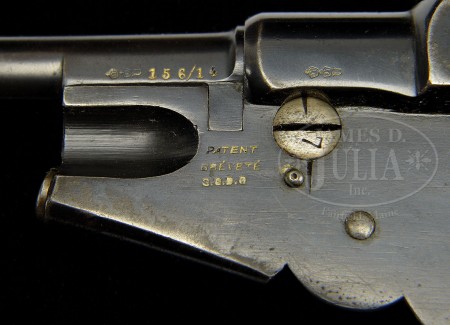
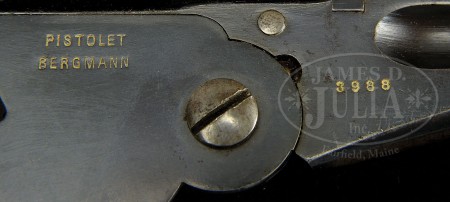
And here is the pistol displayed by Horst Held:
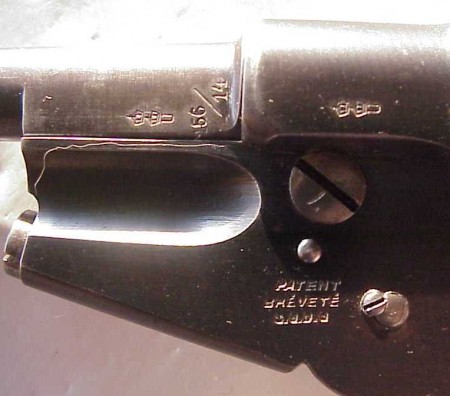

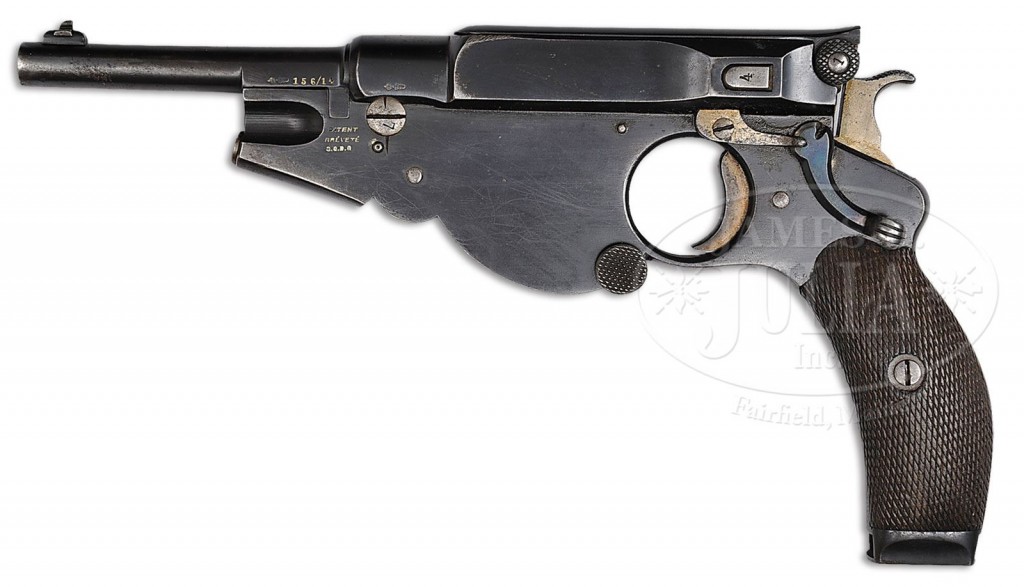
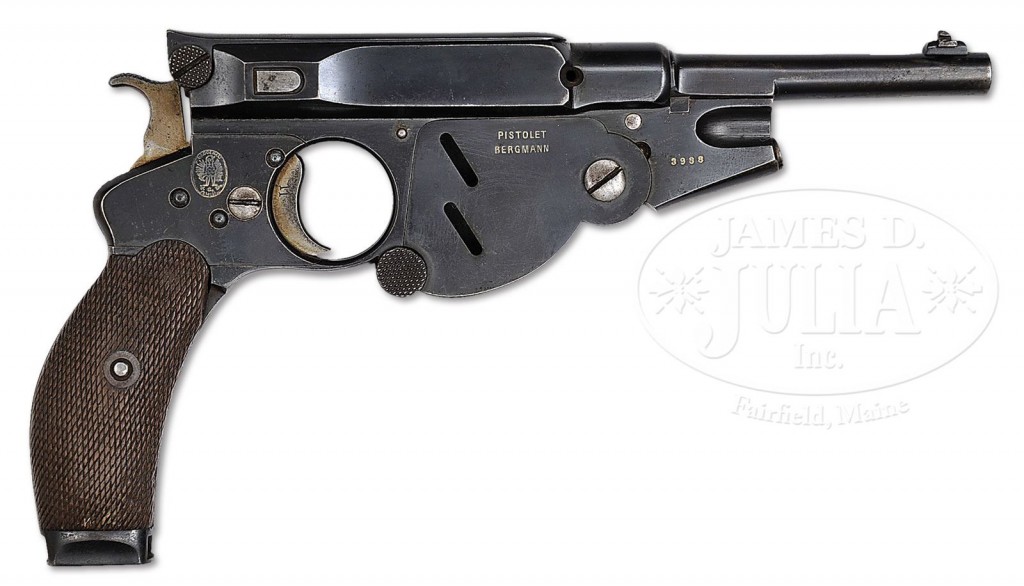
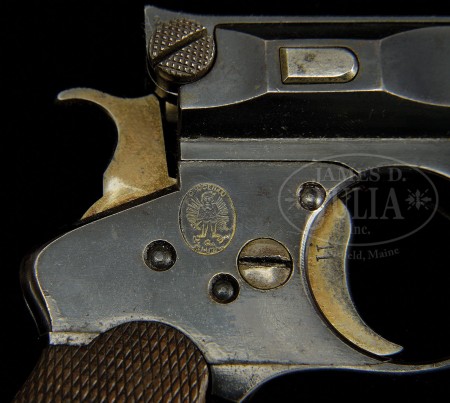
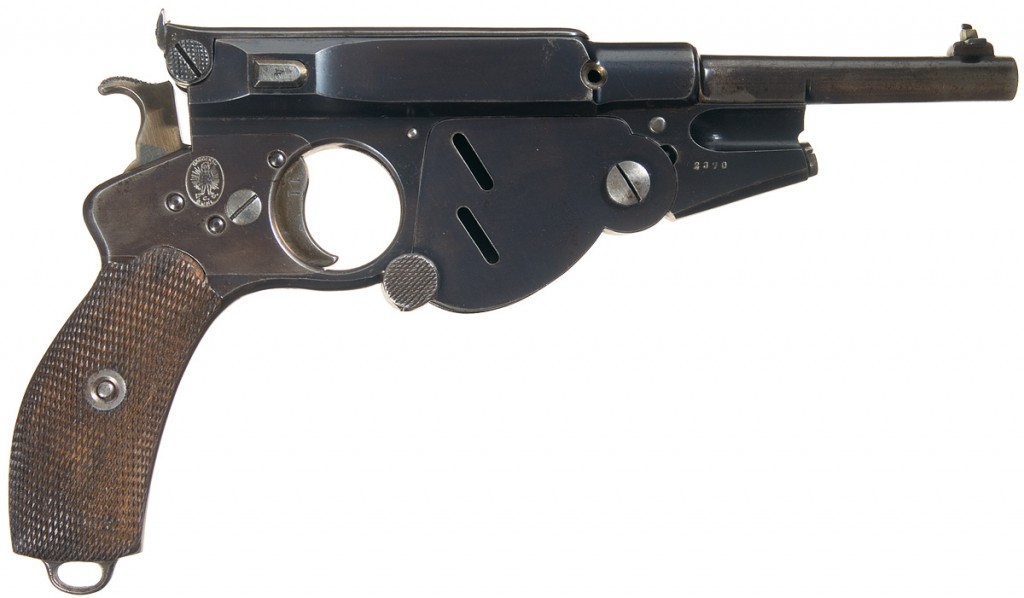
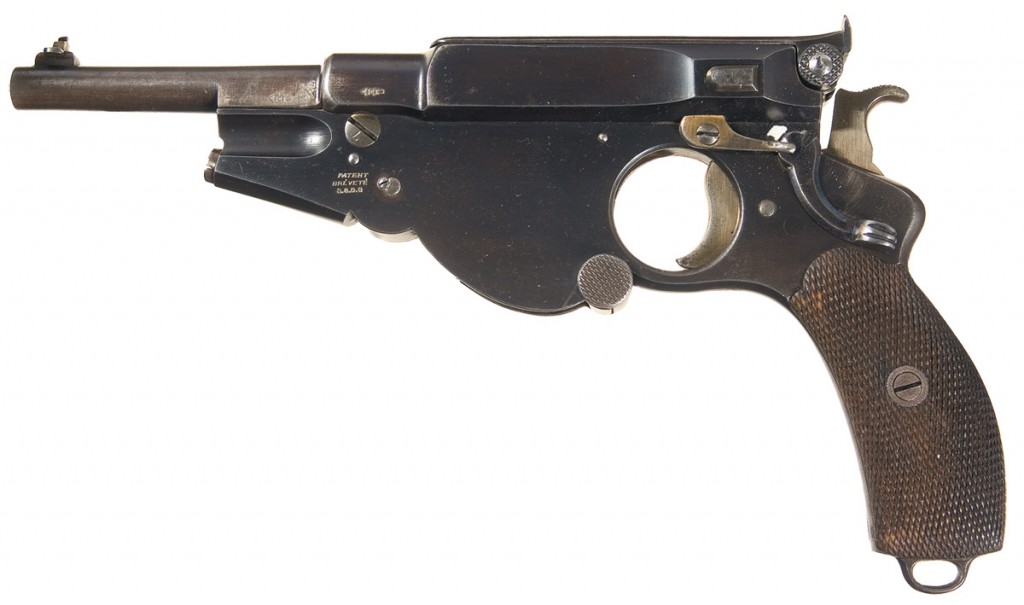
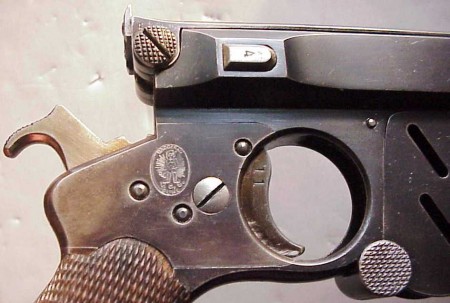
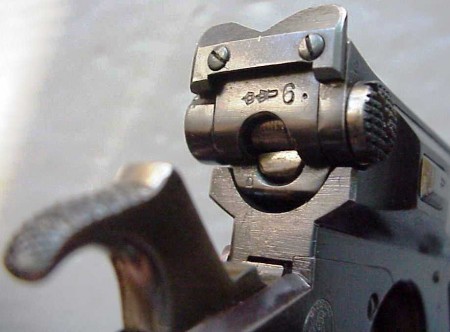
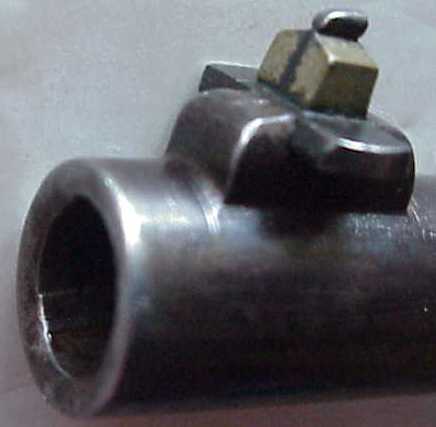
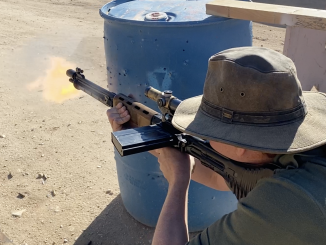

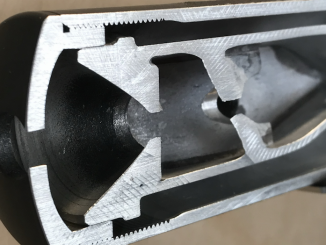
Oh man, this reads like crimi-sequel. Did I say 7.5 would be my calibre pick in previous article’s discussion? This definitely turns out to be lively and enjoyable reading covering scope of Bergmann pistol history. Good stuff & thanks!
A fascinating series. Thanks for posting it.
Did you notice the difference in the sideplate and magazine cover screws on the Julia and Held pistols? Those on the Held have narrow, sharp, clean slots, while the Julia pistol’s have slots that are widened and burred. My guess is that the Held pistol either has never been dismantled, or if it has, it was done by an armorer, while the Julia pistol may have been services at some time by someone who did not have the correct-sized screwdriver. (“In the field”, you use what’s available.)
cheers
eon
I think that taper-case design of Bergmann cartridges is legacy of first grooveless cartridges – the taper was essential for headspacing.
If I correctly understand:
http://www.municion.org/bergmann/8x22No4.htm
“Ninguno de esta serie de cartuchos Bergmann alcanzó gran difusión, y aunque fueron varias las fábricas europeas que los produjeron, hacia 1910 quedó descatalogado.”
8×22 Bergmann never gain popularity and prodcution of this cartridge ceased about 1910.
The basic question is WHY the Bergmann No. 4 never gain popularity. It was caused by the pistol (for example lack of reliability) or something other (for example finance-problem or lack of advertisement)?
I can’t find any additional information about 8×22 Bergmann but I find additional Bergmann No. 4 photos
http://www.pistolcollection.lu/html/BERGMANNMODEL4.htm (include photos of detachable stock)
Nice gun
It’s too bad that Municion.org is in Spanish and I’ve forgotten everything I learned of the Spanish language in high school. Thus I have to rely on Google Translate.
Military commissions were very lucrative, and I can see why few No. 4 Bergmanns were made. If your gun was rejected by the person most likely to use it, other people would not even consider looking at it. After all, there were the previous models around the market place.
Agording to the historian on the FN Plant J M Browning was inspired to the 32 Browning round by the 8 mm Bergmann Simplex round, witch makes some sence. The Bergmann Simplex was tested by the US army in 1899(I have a copy of the report, itmust have been a prototype, because it was not marketed until 1901
Could you send me a copy of that report? I’d love to see it!